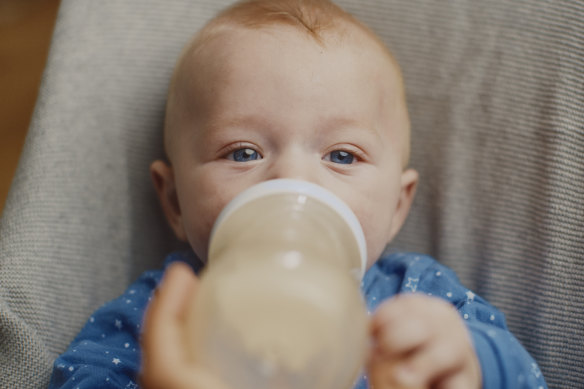Opinion
Why ‘one-and-done’ families like mine are becoming the new normal
Caroline Zielinski
ReporterWhen I opened the newspaper on Thursday and saw that high housing costs, as well as the general expense of raising a child in today’s world, are stopping young people from procreating, my first reaction was: Duh.
According to new data from the Australian Bureau of Statistics, our national fertility rate has fallen to its lowest level since European settlement, with women now having an average of 1.5 children in their lifetime – well below the required replacement rate of 2.1.

Australia’s birth rate has declined again, to 1.5 babies per woman.Credit: Getty Images
As someone with an almost-three-year-old, I am very much in the parenting thick of it. Half of my friends are either pregnant with their first or second child, while the other half have just stopped (mostly after their second).
No one I know is considering more than two kids. And for many, it’s not a case of wanting a smaller family so much as a case of affordability. My partner and I have looked at our situation and done the maths, and though we once considered having another child, a combination of factors has made it impossible. There is simply no financial fat left over for more.
We are not in imminent danger of homelessness or forgoing healthy, nutritious meals, and we both work. So while we aren’t financially struggling, we’re far from being financially comfortable, and even further from being comfortable enough to have more children.
Even with subsidies, our childcare costs are $165 a day. Our mortgage, despite being on the lower end compared with many, still eats up a healthy portion of our incomes thanks to sustained high interest rates. What’s left over after these two major expenses then has to cover sky-high bills, groceries and a general increase in cost of living across the board.
All this financial strife is before we get to what is required of today’s parents to raise a child. While it has always been hard and expensive, research increasingly shows that over the span of just a couple of generations, parents have increased the amount of time, effort and money they put into raising children.
Despite more mothers than ever working (63 per cent in 2019 compared with 30 per cent in 1984), they are still spending roughly as much time caring for children as stay-at-home mothers did in the 1970s.
Add to this the persistent pressure and expectation to spend huge amounts of time and money enriching children’s minds, bodies and spirits to ensure they are equipped with every advantage needed to achieve a secure, middle-class life. One friend recently once told me that to be a well-rounded individual, a child needs at least two out-of-school activities: a team sport for fitness and socialisation, and something artistic to stoke their creativity. While that sounds great in theory, the reality of what that looks like for a parent stretched by the arrival of each new child – both in time and cost – is enough to seriously deter anyone.
A recent survey by Canstar Blue found on average, Australian parents are spending $1073 a month on child-related costs, or $12,876 per year. When broken down into cost per number of children, it found parents are paying $1005 a month for one child; $1214 for two children; $1303 for three; and $1414 for four children. When compared with 2018 data from the Australian Institute of Family Studies, which put the monthly cost of raising two children at $736, this shows the price of raising children has close to doubled within just six years.
According to the Australian Institute of Family Studies, two-child families are still the norm, but one-child families are very much on the rise. In 1981, only 8 per cent of women aged 40 to 44 years had one child. By 2021, that number doubled to 16 per cent.
As demographer Liz Allen said following the ABS data release: “Housing affordability, economic insecurity, gender inequality and climate boiling – that’s a recipe for the most effective contraceptive ever.”
Among my friends, a few who wanted two children are slowly skewing towards the “one-and-done” as they encounter the financial and emotional costs of child-rearing in this increasingly tumultuous world.
For our little family, we’ve come to accept that another mouth to feed, love and raise would seriously impact our quality of life. Holidays would have to go, as would gym memberships, the occasional dinner out, and our child’s participation in extracurricular activities.
While the revelation that our nation’s birth rate is plummeting is certainly concerning and comes with many risks attached, one thing it isn’t is surprising.
Caroline Zielinski is a freelance writer based in Melbourne.
The Opinion newsletter is a weekly wrap of views that will challenge, champion and inform your own. Sign up here.